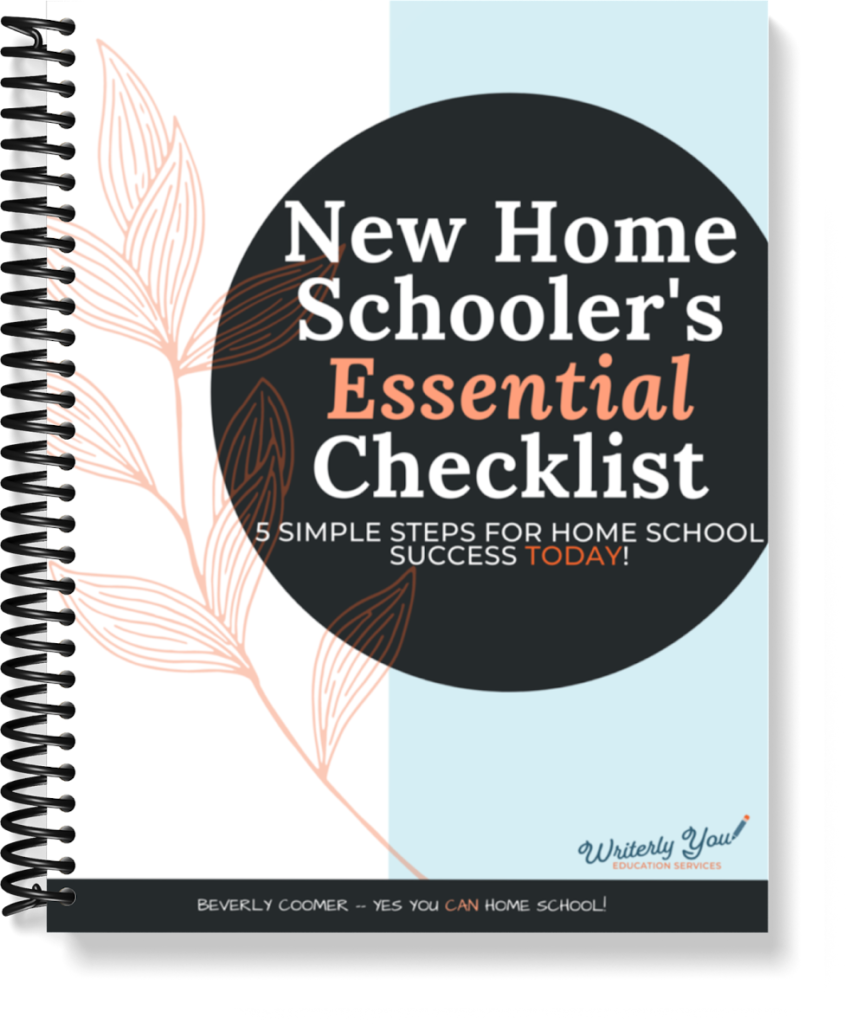De-‘Schoolify’ Your Home School!
You shall teach them diligently to your children, and shall talk of them when you sit in your house, when you walk by the way, when you lie down, and when you rise up.
Deuteronomy 6:6-7

The process of ‘deschooling’ takes time as you develop a new way of thinking about ‘school’, education, and intentional learning. Taking your child out of the public school system was easy. Taking the public school system out of your child — and you — may take a little longer. Transitioning into this new way of teaching and learning alongside your children will be easier with a few tips for bridging the gap between what your family is used to and where your journey is leading.
Ready to home school?
Not sure where to start?
Sign up to get the New Home Schooler’s Essential Checklist. It’ll help you navigate the first steps of your home education journey simply, effectively, and stress-free.

De-Schooling Tips
Debrief.
One of the first steps in successfully transitioning to a home learning environment is getting your children on board with your decision. As the parent, you have the responsibility to make the best education choice for your family; along with that is the necessity to remind your children that your authority is both benign and good, and you are making this decision for their benefit. But you may need to help them become convinced.
Sit down together and talk about your concerns, likes, and dislikes regarding the public school system. Be clear and specific, but don’t use inflammatory or disparaging language against particular teachers or administrators. Ask your children what they liked about their education, what they wish was different, and what they will miss. Encourage them to share ideas of what they think this new paradigm should look like, and how your family will adapt to the changes.
As your children adjust to not being ‘in school’ anymore, they may exhibit patterns of behavior you didn’t expect. It may take days, or it may take weeks or months for attitudes and hearts to change; be patient, and be willing to let your children work through their thoughts and feelings gradually.
Discuss.
Once you understand your children’s point-of-view, explain what you hope your family’s new education adventure will look like and where you hope it takes you. Discuss your ‘why’ with your children and let them know that you value their input into what makes a truly ‘good’ education. One of the benefits of home schooling is learning to communicate well, and creating the habit of listening to your children will go a long way in modeling proper conversation skills.
Ready to home school?
Not sure where to start?
Sign up to get the New Home Schooler’s Essential Checklist. It’ll help you navigate the first steps of your home education journey simply, effectively, and stress-free.

Dream. Create. Build. Dream some more.
Children are born curious and creative, but the education system often squelches these gifts before a child reaches their teens. By creating time and space for your children to dream about their future and how to make it happen, you can restore their imagination and allow their natural curiosity and creativity to blossom once again!
Let your children create ‘stuff’ and build things. Working with their hands is a necessary process for mental, social, and emotional development, so give them time and space to explore, expand their thinking, and enlarge their dreams. Don’t get too worked up over the messiness it may entail. If you let them know ahead of time that cleaning up is part of the discovery process, they will be more likely to tidy up afterward!
You may be tempted to want to offer suggestions for what kind of projects and activities they ‘should’ attempt. Don’t. Let this be their thing. Your job is to encourage and appreciate their efforts.
Besides hands-on projects, another strategy to encourage dreaming and creating is to use online resources for generating ideas. TED Talks, documentaries, and movies-as-literature are all excellent teaching tools that won’t seem like ‘school’ to your children if you find programs that pique their interests. Watch along with them, and ask good questions later — but don’t recreate the Spanish Inquisition by expecting them to recite the main ideas, plots, or educational value of otherwise fun viewing!
Volunteer with your children.
Learning to help others through community service projects is not only an important character trait, but it also teaches valuable life skills, including communication, cooperation, consideration for the needs of others, planning and organization, and selflessness. Don’t underestimate the power of service to others as opportunities for learning about themselves, their community, the world they live in, and their purpose in it!
Ready to home school?
Not sure where to start?
Sign up to get the New Home Schooler’s Essential Checklist. It’ll help you navigate the first steps of your home education journey simply, effectively, and stress-free.

Go Places!
One of the best ways to make education come alive is by experiencing our world first-hand. Education ‘systems’ tend to dull students’ senses and interests by filtering history and natural science through textbooks and lectures. As home learners, you have the freedom to travel to the places where the events in the textbooks took place, and observe your surroundings in person!
Your children will revel in engaging all of their senses as they see, hear, feel, taste, and touch the places and things that make our world so amazing! And you don’t have to go far to enjoy a great field trip: start with your local fire department, area farms or ranches, the zoo, botanical gardens, discovery centers, nurseries, nature trails, historical monuments, etc. And while you’re at it, see if you can get your hands on a traditional road map; your children will be transfixed as they plan routes to the sites near you!
Read stuff.
Really. Read lots of historical fiction, biographies of famous Americans as well as world-changers from other countries, nature books, adventure stories, and classic literature. Your enthusiasm for learning about other people, places, and cultures will rub off, and you will have wonderful conversations about why people acted the way they did, the consequences they experienced, and how your children might have reacted in similar circumstances. Truly, good conversation around great books can transform the way your children see their world and themselves. And they’ll hardly know they’re ‘in school’!
Connect with your community.
Find organizations in your community that offer long-term programs and activities to connect your children with other young people in more structured and controlled environments. Most communities offer a variety youth programs, including 4-H, FFA (middle-school and high school level students), theatre, music lessons, art programs and classes, or ‘junior’ service organizations. And consider volunteering to help out whichever activity your child wants to join; programs are always looking for help, and you will build strong, healthy, and loving bonds with your child around shared interests.
Ready to home school?
Not sure where to start?
Sign up to get the New Home Schooler’s Essential Checklist. It’ll help you navigate the first steps of your home education journey simply, effectively, and stress-free.

Find other home learning families.
Let’s face it: deciding to bring your children home for school brings a lot of changes in your family dynamics and relationships. Finding other families who understand and can encourage you and your children is invaluable in helping your entire family break free of the artificial social structures inherent in public schools. By helping your children develop friendships with other home educated families, including children of varying ages and interests, you will be de-schooling their limited social experiences and expanding their understanding of what it means to ‘get along well with others.’
Is Deschooling Really a Thing?
If I had understood the importance of changing the way I thought about education and school when we began our home learning adventure, I would have spent far fewer years struggling to figure out why my efforts to teach my children weren’t working. As I allowed myself time to rethink what learning is really all about, I discovered that I needed to let go of my preconceived notions of how children learn; I had to ‘de-school’ myself so I could model for my children what true education could look like.
Yes, deschooling is a thing.
When you begin teaching your own children at home you are entering an entire new education paradigm. De-schooling — eliminating your family’s former perceptions of what school ought to look like and how it ought to work, and replacing them with the ‘new wine’ of education freedom — is a process, not a product, and it will take time for those new ideas of to germinate, take root, and begin to grow.
Be prepared for some ‘growing pains’ as your family adopts this new way of thinking about teaching and learning. Be patient with yourself and your children. Keep things simple. Trust the process. Trust your child. Trust yourself. Trust the LORD. As you guide your children ‘diligently while you sit in your house, walk by the way, lie down, and rise up’, you will find that the old ways have disappeared, new ways are becoming your new normal, and your family is successfully de-schooled!
Well done, mama.

